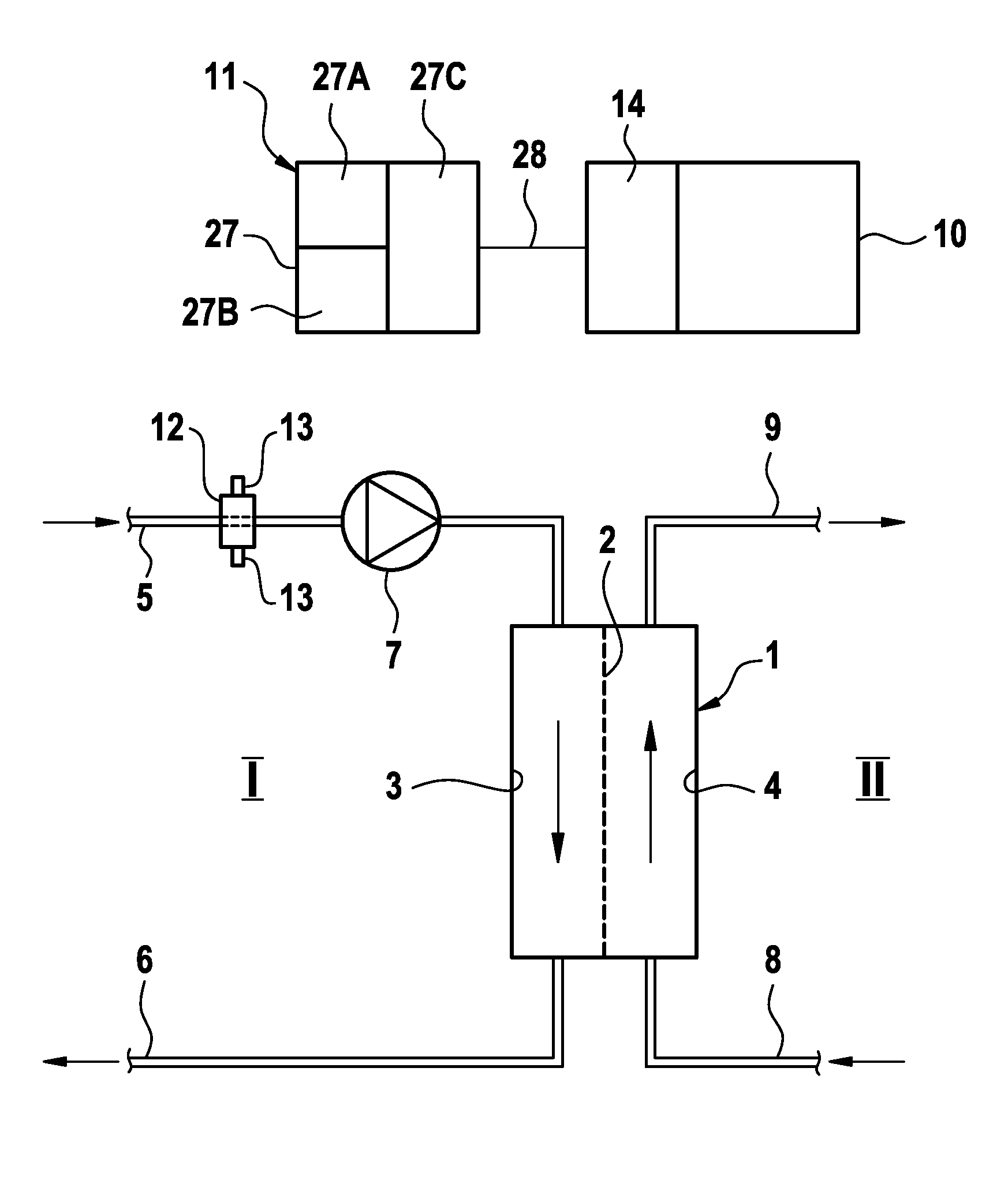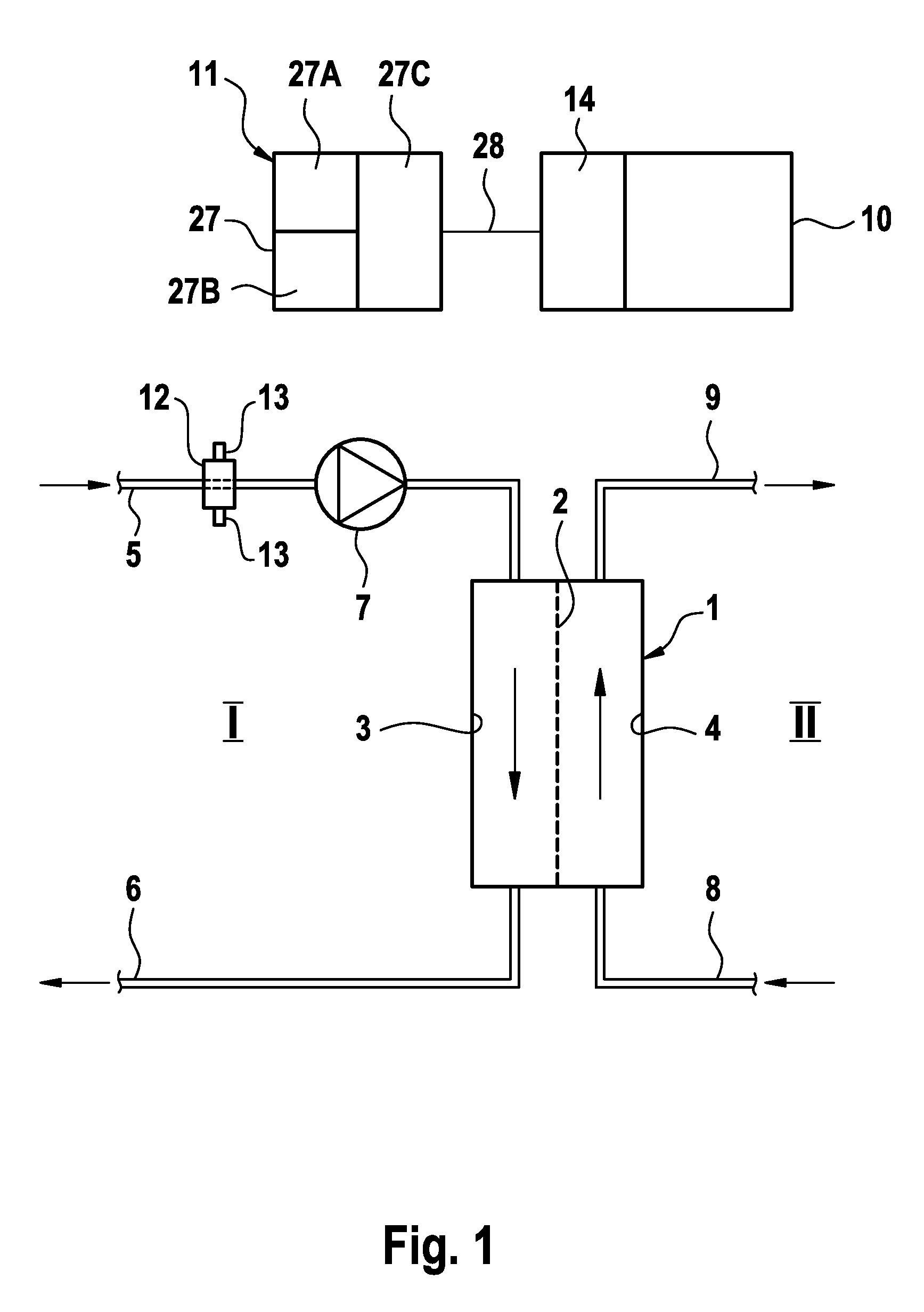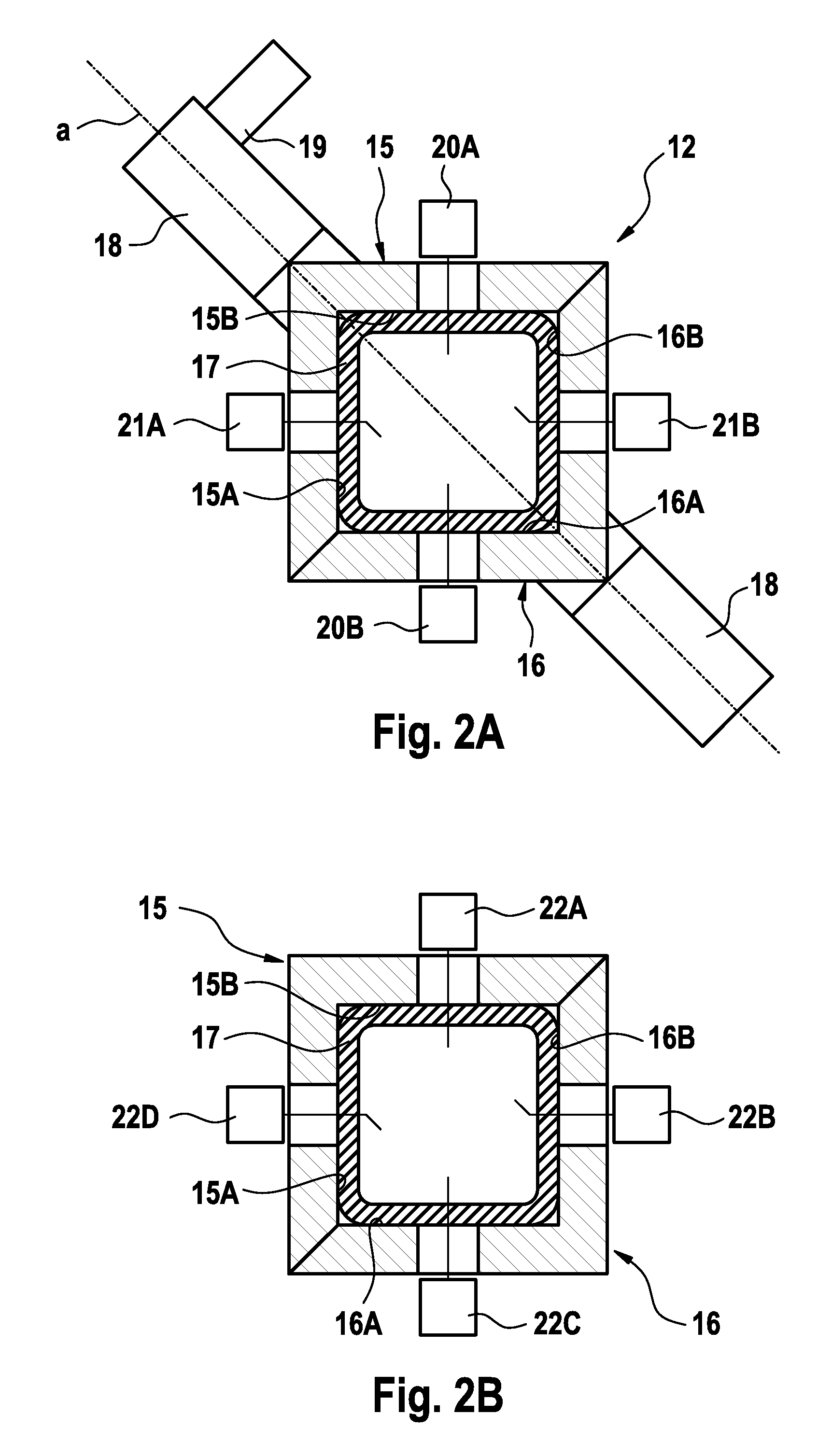Device for determining a concentration of a constituent of blood in a hose line
a technology of blood hose and constituent, which is applied in the direction of color/spectral property measurement, sensors, medical devices, etc., can solve the problems of adverse effect on measurement accuracy, limited selection of light emitters, and reduced light yield of leds, so as to reduce the influence of hose line on the distance covered by light, the effect of reducing the signal amplitude and double the light yield
- Summary
- Abstract
- Description
- Claims
- Application Information
AI Technical Summary
Benefits of technology
Problems solved by technology
Method used
Image
Examples
Embodiment Construction
[0039]FIG. 1 shows only the components of an apparatus for extracorporeal blood treatment that are essential to the present invention, in a very simplified diagrammatic representation. The extracorporeal blood treatment apparatus, for example a dialysis apparatus, comprises a dialyser or filter 1, which is divided by a semipermeable membrane 2 into a blood chamber 3 and a dialysing fluid chamber 4. An arterial blood line 5 leads from the patient to blood chamber 3, whilst a venous blood line 6 leads away from the blood chamber 3 and to the patient. A blood pump 7 disposed in arterial blood line 5 conveys the blood in extracorporeal blood circuit I. Dialysing fluid system II of the dialysis apparatus is represented only in outline. It comprises a dialysing fluid supply line 8 leading to dialysing fluid chamber 4 and a dialysing fluid discharge line 9 leading away from dialysing fluid chamber 4. Arterial and venous blood lines 5, 6 are hose lines which are at least partially permeable...
PUM
| Property | Measurement | Unit |
|---|---|---|
| angle | aaaaa | aaaaa |
| angle | aaaaa | aaaaa |
| current | aaaaa | aaaaa |
Abstract
Description
Claims
Application Information
 Login to View More
Login to View More - R&D
- Intellectual Property
- Life Sciences
- Materials
- Tech Scout
- Unparalleled Data Quality
- Higher Quality Content
- 60% Fewer Hallucinations
Browse by: Latest US Patents, China's latest patents, Technical Efficacy Thesaurus, Application Domain, Technology Topic, Popular Technical Reports.
© 2025 PatSnap. All rights reserved.Legal|Privacy policy|Modern Slavery Act Transparency Statement|Sitemap|About US| Contact US: help@patsnap.com



